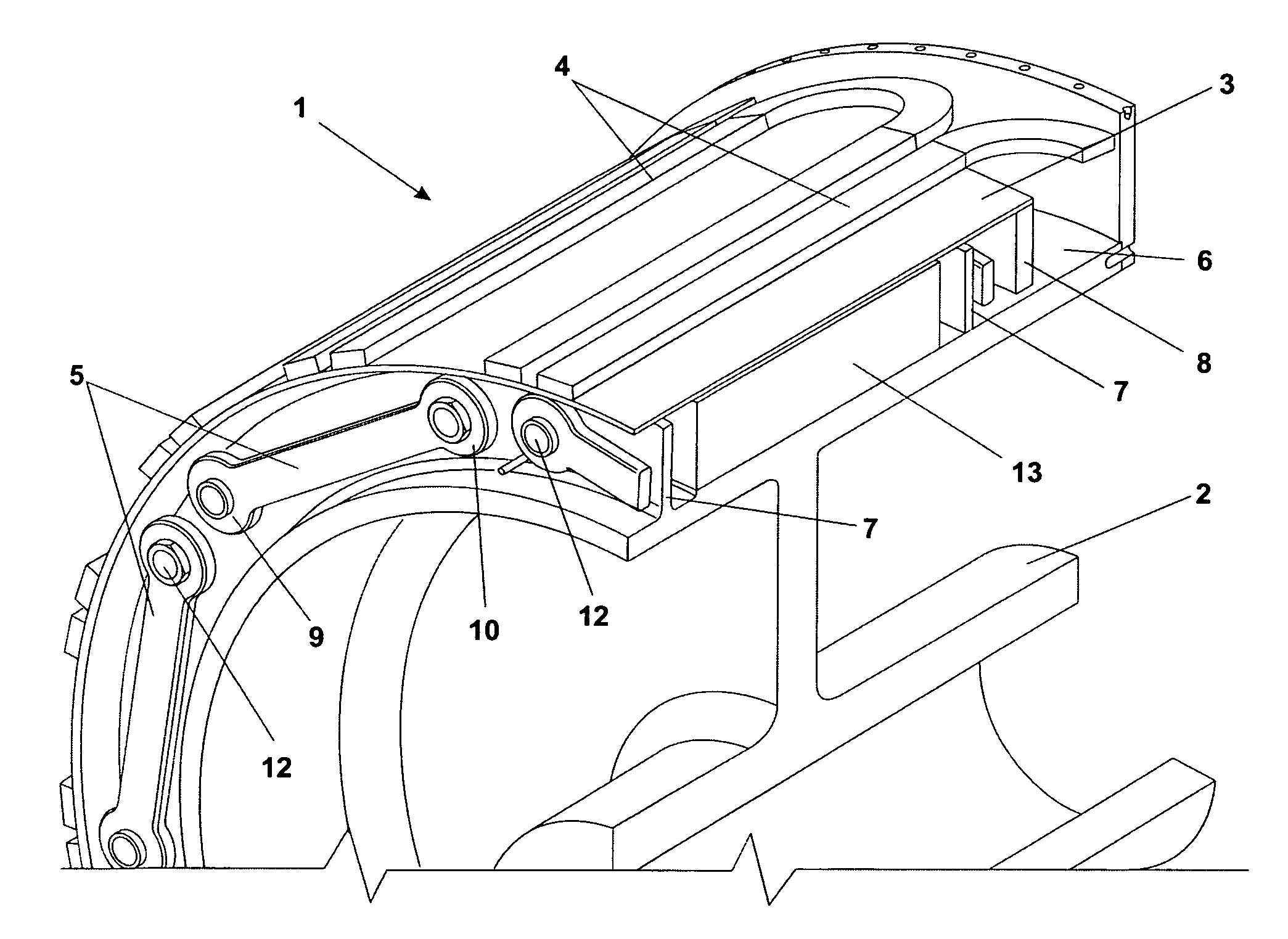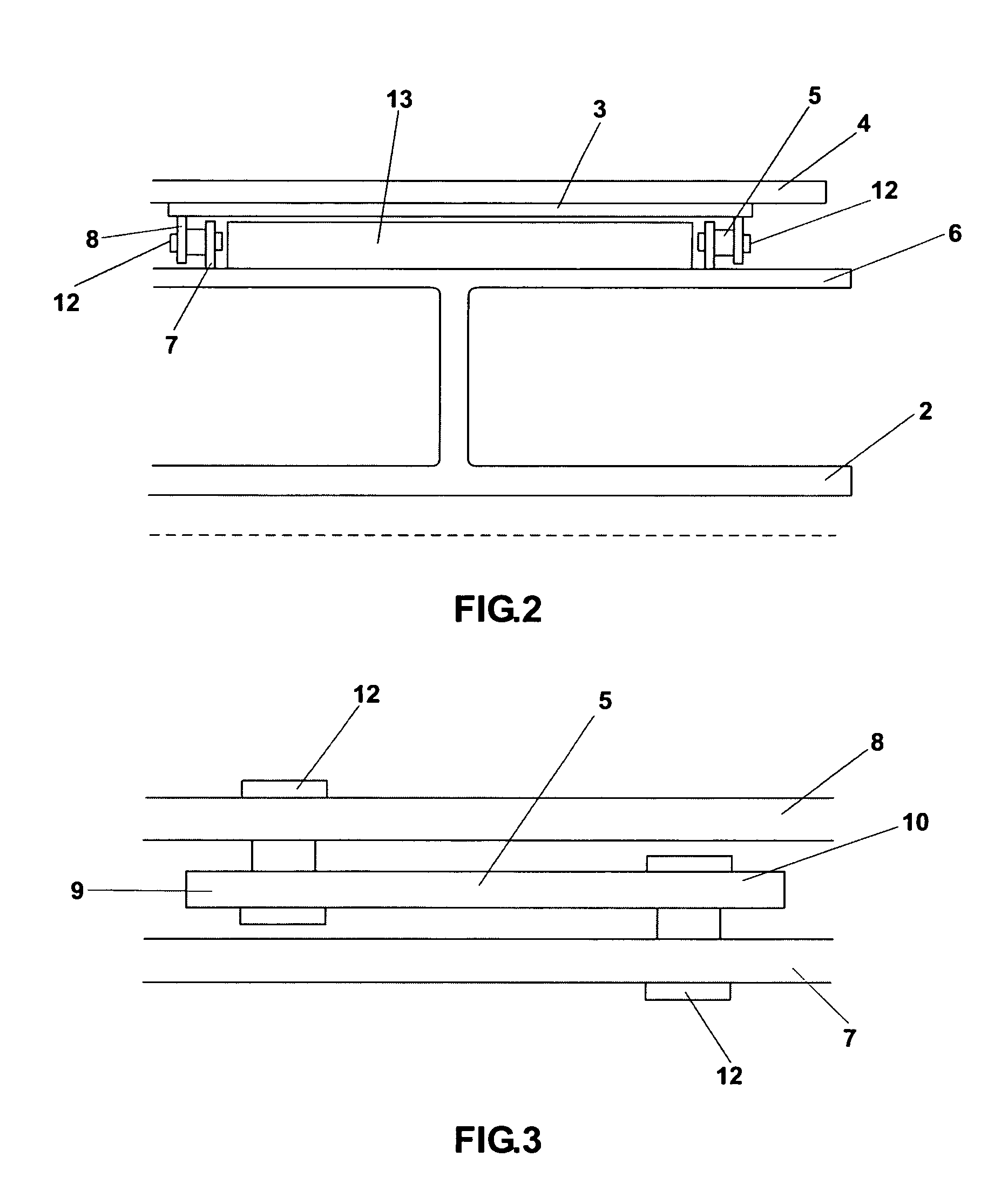Rotor or a stator for a superconducting electrical machine
a superconducting electrical machine and rotor technology, applied in the direction of dynamo-electric machines, electrical apparatus, magnetic circuits, etc., can solve the problems of short circuit torque, large contractive force that the rotor or stator must withstand, oscillatory and typically many times greater torque, etc., to minimize their thermal expansion and contraction, low thermal conductivity, and low cost
- Summary
- Abstract
- Description
- Claims
- Application Information
AI Technical Summary
Benefits of technology
Problems solved by technology
Method used
Image
Examples
Embodiment Construction
[0041]A cutaway view of a rotor 1 according to the present invention is shown in FIG. 1. The rotor 1 substantially consists of a mounting 2, a field coil support structure 3, a plurality of field coils 4 and a plurality of coupling elements 5. The rotor 1 may form part of an electrical machine (not shown) in a manner that will apparent to a person skilled in the art.
[0042]The mounting 2 is substantially hollow and tubular and has a cylindrical outer surface 6. The mounting 2 forms the central shaft of the electrical machine 1. During operation of the electrical machine, the mounting 2 will be maintained at a substantially ambient operating temperature in order to maintain its necessary physical properties such as strength and torque resistance.
[0043]A pair of circumferentially continuous radially outward extending flanges 7 is formed on the outer cylindrical surface 6 of the mounting 2. Each flange 7 extends radially outward from the mounting 2 a distance that is less than the radia...
PUM
 Login to View More
Login to View More Abstract
Description
Claims
Application Information
 Login to View More
Login to View More - R&D
- Intellectual Property
- Life Sciences
- Materials
- Tech Scout
- Unparalleled Data Quality
- Higher Quality Content
- 60% Fewer Hallucinations
Browse by: Latest US Patents, China's latest patents, Technical Efficacy Thesaurus, Application Domain, Technology Topic, Popular Technical Reports.
© 2025 PatSnap. All rights reserved.Legal|Privacy policy|Modern Slavery Act Transparency Statement|Sitemap|About US| Contact US: help@patsnap.com



